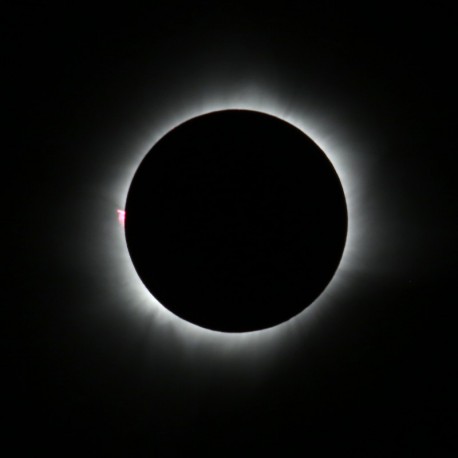 View larger
View larger
Big Sun, Small Moon?
New activity
If you’ve ever seen a picture of a solar eclipse, you may have noticed that the Moon comes very close to covering the entire Sun.
Open Activity
How-to Video
-
Rating
-
Participants Enjoyed the ActivityParticipants Learned from This ActivityActivity Instructions Were Clear and Easy to FollowWould Recommend
Related Programming Resources
Reviews
Vivid demonstration of the effects of distance
We had a sun-shaped Mylar balloon that had lost its helium but hadn't yet been disposed of, so we taped that to the wall at the front of the room while we talked about the sun, the moon, and eclipses. The balloon had the additional benefit of artistic rays coming off the edges, which made a great corona effect when plates were at exactly the right distance. Students usually understand that the sun is much bigger than either Earth or the moon, but that makes it tricky for them to understand how the moon can ever completely cover the sun. This was an extremely concrete way to demonstrate the effect. After we had talked about the celestial objects, we showed them a stack of dessert-sized paper plates, and held one up in front of the balloon to demonstrate that it only covered a tiny fraction of the surface. Then we handed out the plates and invited them to observe the balloon behind the plate at arm's length, standing at various distances from the "sun." The gasps as the sun balloon "disappeared" were almost comical. Most didn't expect such a thorough coverage. We also demonstrated how changing the position could result in partial, rather than total eclipses. We were working with a crowd that tended toward the younger side, but even older siblings seemed to find it intriguing to try out.



